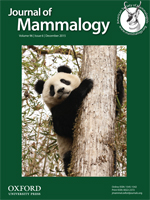Many mammals have been reported to significantly bias their offspring sex ratios, but these deviations from equality have been difficult to understand and are often inconsistent even within the same species. Evolutionary theory predicts a number of scenarios where females should bias their investment to one sex over the other; when fitness returns are sex specific, selection favors the facultative adjustment of offspring sex ratios to the sex with the highest inclusive fitness return. Interpreting sex allocation in mammals within the framework of classic sex allocation theory is challenging given the complex life histories and social interactions of species, hence it is likely that there are multiple mechanisms and selective forces dependent upon maternal and environmental drivers. Here, we show the previously demonstrated condition-dependent sex allocation in bridled nailtail wallabies (Onychogalea fraenata), where females in better condition were more likely to have sons, was reversed under high population densities and elevated maternal stress. In this solitary species, an elevated glucocorticoid stress response under unnaturally high densities likely influences adaptive sex allocation to the dispersive sex, consistent with the local resource competition theory. Managing factors such as population density, maternal stress, and food resources may be used to adjust offspring sex ratios in this endangered species.
How to translate text using browser tools
1 December 2015
High Density, Maternal Condition, and Stress are Associated with Male-Biased Sex Allocation in a Marsupial
Emily P. B. Moore,
Matt Hayward,
Kylie A. Robert
ACCESS THE FULL ARTICLE

Journal of Mammalogy
Vol. 96 • No. 6
December 2015
Vol. 96 • No. 6
December 2015
bridled nailtail wallaby
local resource competition
sex allocation
sex ratio
Trivers—Willard hypothesis




